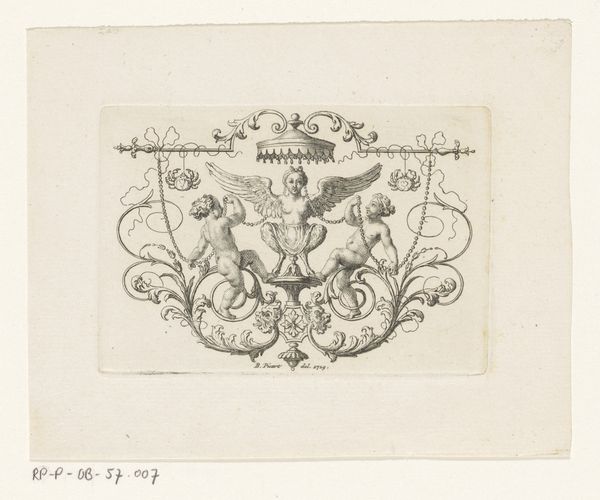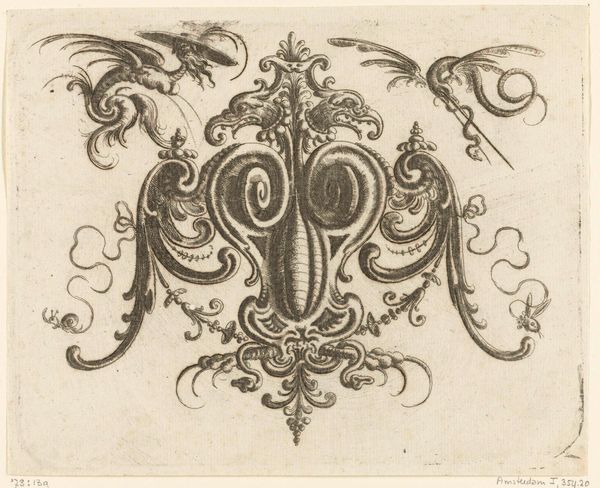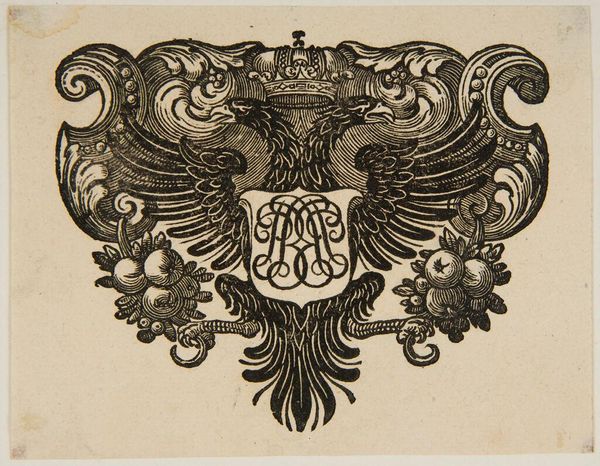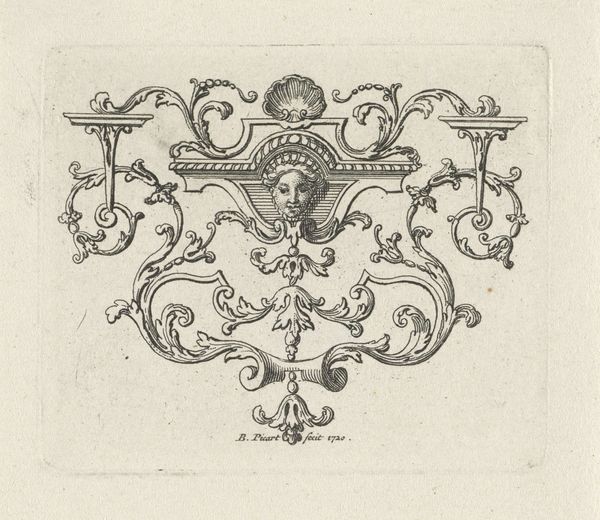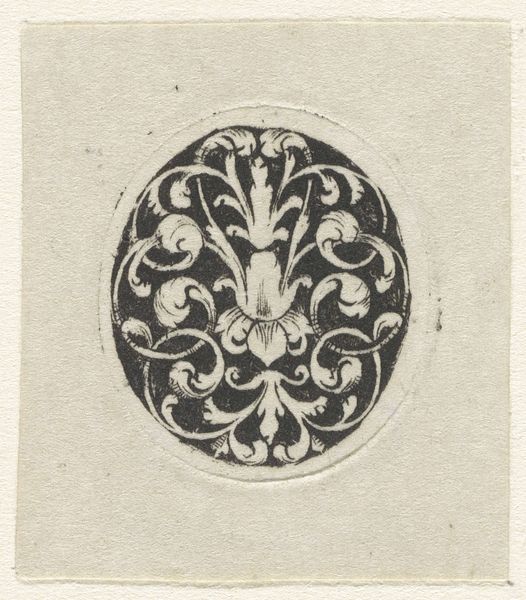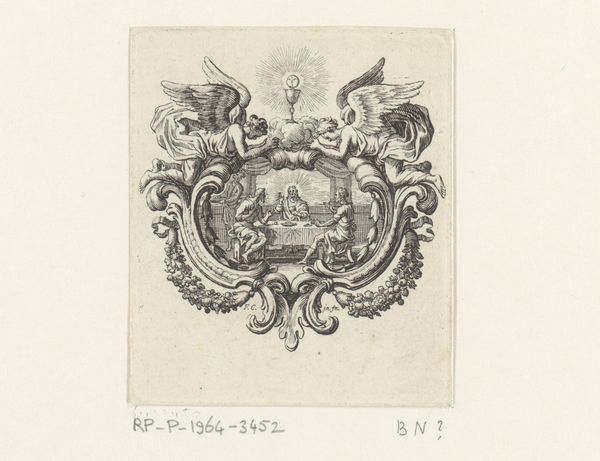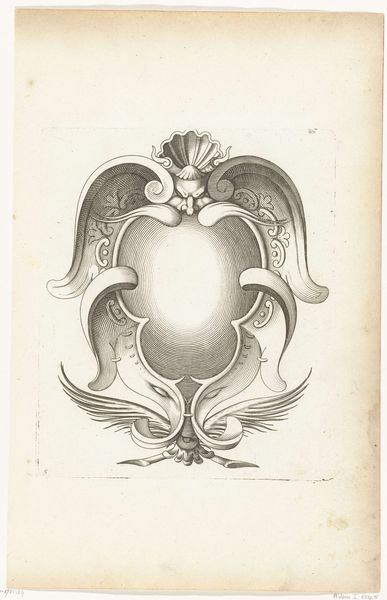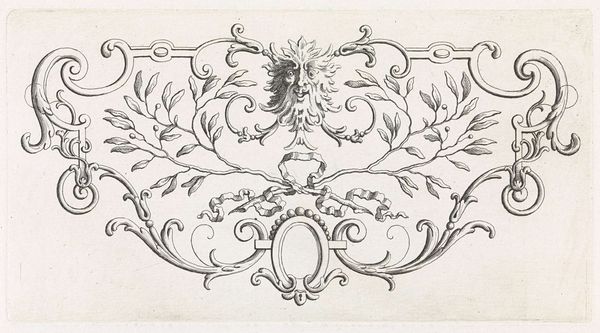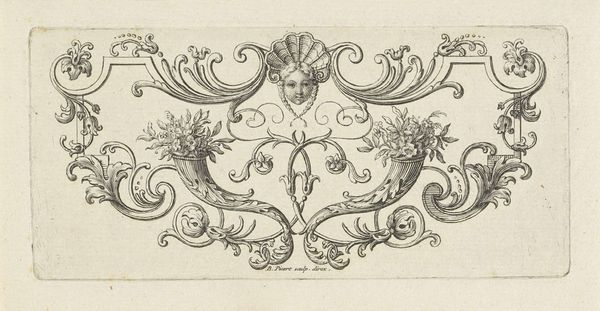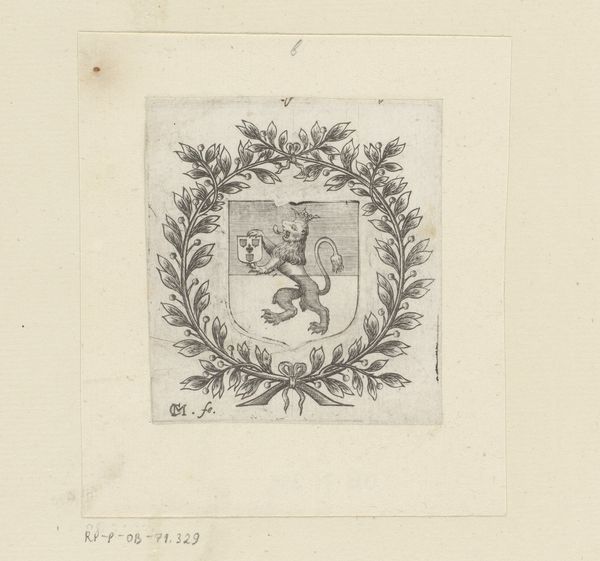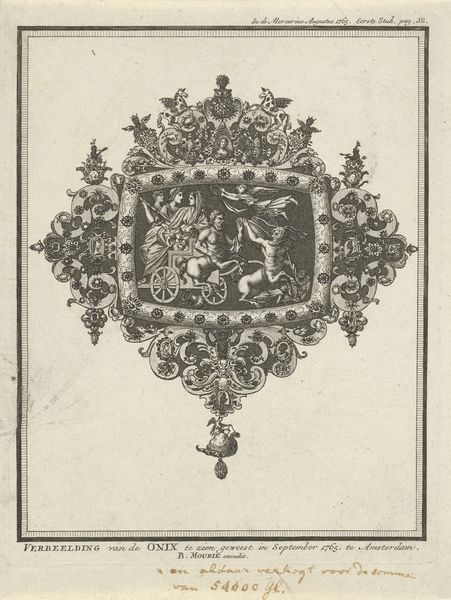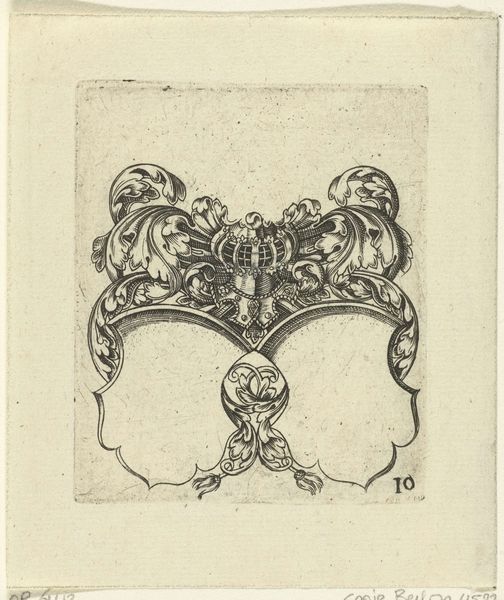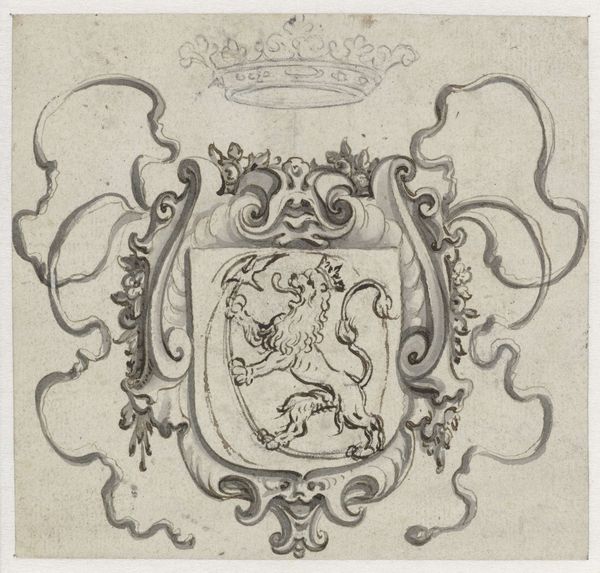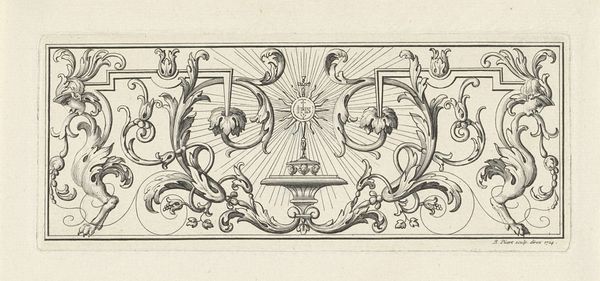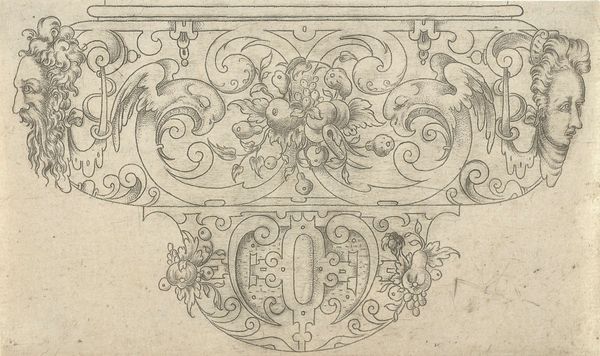
Dimensions: height 52 mm, width 48 mm
Copyright: Rijks Museum: Open Domain
Curator: This intriguing print, rendered with the intricacy of an engraving, presents "Schild met het wapen van Silesië," dating back to 1595 and created by an anonymous hand. Editor: The first impression is stark, heraldic, and undeniably proud. It’s an emblem etched with intent. The detail in the eagle’s feathers, for instance, whispers stories of power. Curator: Absolutely. Coats of arms like this were crucial visual statements in Renaissance Europe, emblems that went beyond simple family identification to stake a claim within complex networks of power, prestige, and often, legitimacy. They visually cemented one's place in the world. Editor: The eagle, though stylized, conveys such force, doesn't it? Look at the determined beak and the almost gothic arch of the wings. It’s not just decorative; it feels symbolic of something… fierce independence? Curator: Possibly. In the Northern Renaissance, artists employed symbolism to communicate layered meanings, particularly concerning political and religious affiliations. Silesia, a region contested by many powers throughout history, would have wanted to project a strong sense of identity and self-governance through this very imagery. Editor: I wonder who this was made for, really. To see a coat of arms outside, like, literally carved in stone… that hits different than something printed on a page. What sort of scale were they imagining when they sketched this? Curator: It's likely this print served multiple functions: preliminary design work for larger commissions like tapestries or even architectural details, but also as disseminations of the Silesian symbol across a broader network, almost like early forms of branding or political propaganda. Engravings were relatively easy to reproduce and share. Editor: Propaganda as art. It still feels kind of cool in its own way! So, looking back, the lines, the detail—it’s all aimed toward amplifying an idea of Silesian fortitude, right? Curator: Precisely. By looking closely at these designs, we unlock windows into a world of shifting allegiances and powerful visual assertions, even today. Editor: Makes you wonder what emblem we’d design to capture us, doesn’t it? Thanks for sketching out that history, it adds something.
Comments
No comments
Be the first to comment and join the conversation on the ultimate creative platform.
